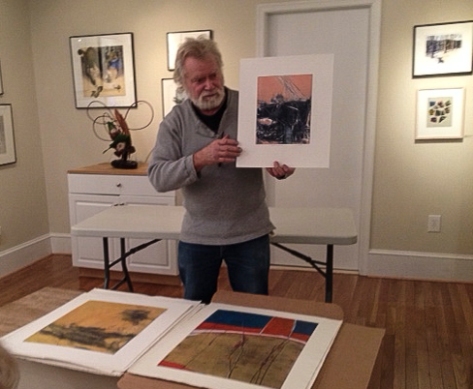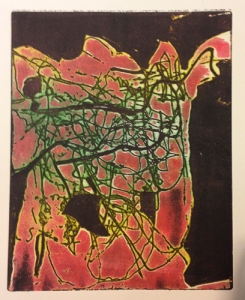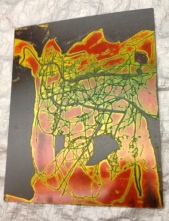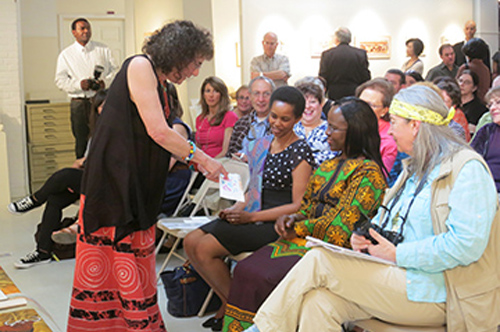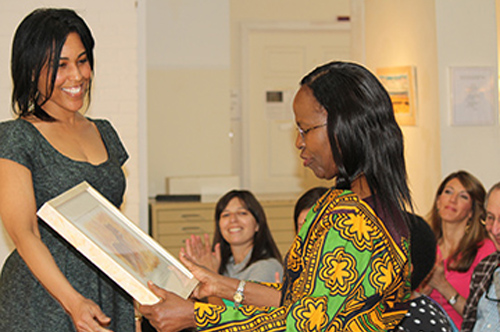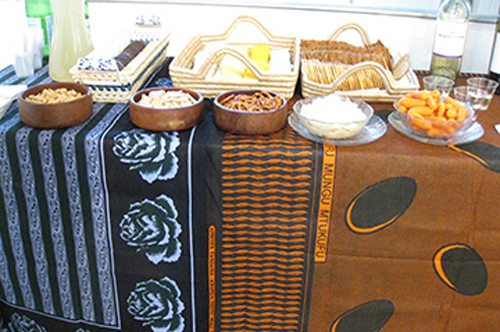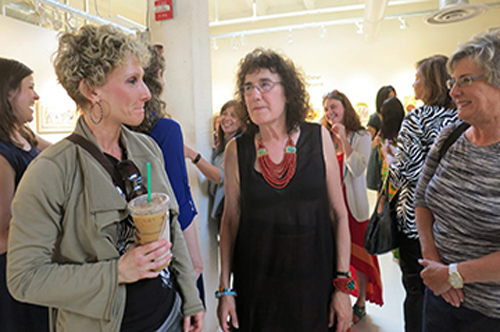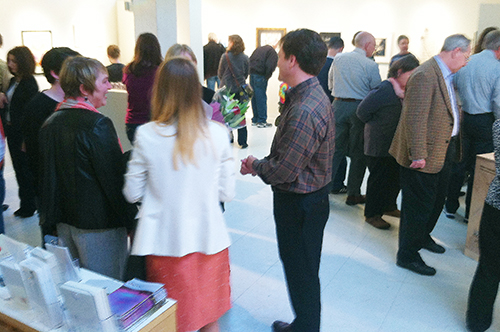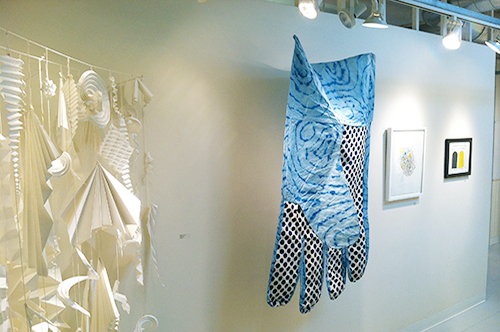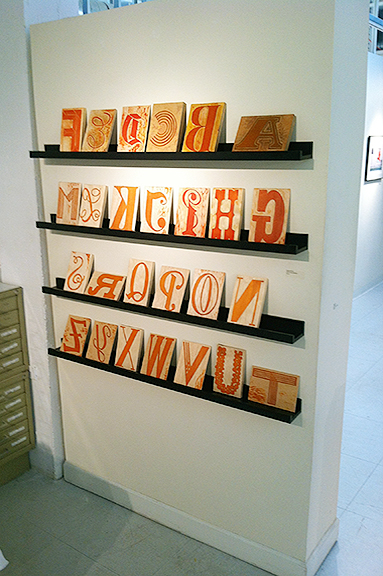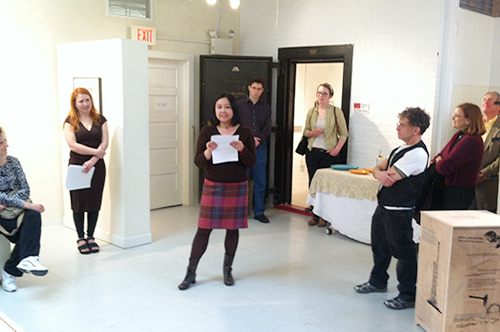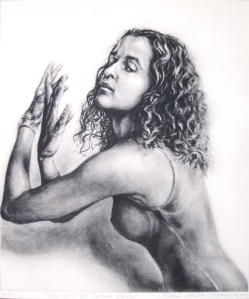From April 30-May 25, Washington Printmakers Gallery will present the work of member artist Marian Osher in her solo exhibit Jambo, Tanzania. The opening exhibition for this show will take place 1-4pm on Saturday, May 3. Below, you will find more information on Osher’s work and exhibit.
“The thrill of sighting a rhinoceros transformed into shock when our guide told us there were only 13 left in the Serengeti.” – Marian Osher
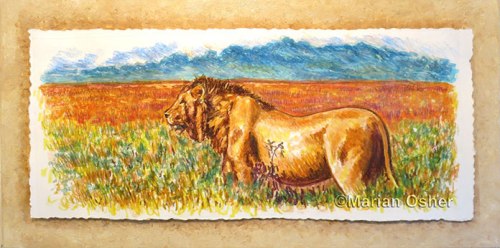
“Simba”, mixed-media monotype on painted canvas, Marian Osher ©2014, 12 x 24
Realizing a Dream
Marian Osher and her husband Chuck realized a dream, when they went on a safari last summer to Tanzania, Africa. They learned that African wildlife has been threatened by poachers, cyberhunters and trophy hunters. Elephants and rhinoceros have been killed for their tusks. Fear of diseases carried by the tsetse fly has historically provided “justification” for reduction of the African wildlife population.
Moments in the Lives of Tanzanian Wildlife
Fifty colorful monotypes present an “alphabet” of Tanzanian wildlife – birds, baboons, cape buffalo, a cheetah, dikdiks, elephants, giraffes, grants gazelles, hartebeests, hippopotamuses, impalas, lions, leopards, a lizard, monkeys, ostriches, a rhinoceros, Thomson’s gazelles, wildebeests, warthogs, and zebras.
Two Avenues of Presentation Expand the Viewers Experience

Marian Osher with the etching press. Photo by: Julie Hipkins.
Mixed-Media Embossed Monotypes on Painted Canvas
Eighteen of the prints on the wall are mixed-media monotypes on canvas.
Creating the Monotype: Osher draws and paints her image on a mylar plate, using a combination of water-soluble media. Next, she transfers the image to dampened paper with her etching press. After the monotype is dried under weights over night, Osher tears off the white border around the print with a deckled edge ruler.
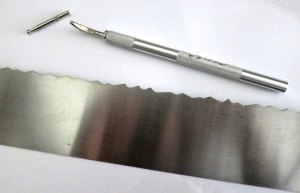
Deckle edge tool, burnisher and stylus point
Hand embossing: Osher decides which areas of the print she wants to emboss. First she uses a stylus to score the edges of shapes on the front side of the print. Then she turns the print over and uses a burnisher to hand emboss the shape that she want to raise.
“I like to experiment with techniques and presentation. The deckled edge of the paper casts a shadow on the painted canvas and adds dimension to the artwork.” – Marian Osher
The Canvas and Assembly: Osher paints the canvas using a subtle combination of colors that complement the print and relate to the colors of the Tanzanian dirt roads. She cuts an acid free foam board to a size that will allow the deckled edge of the print to extend slightly over the foam board. The foam board is lightly filed, sealed with Golden GAC 100 medium and painted on the edge to match the color of the canvas. The print is sealed with an isolation coat of diluted Golden Soft Gel medium and is mounted with the same medium, undiluted, onto the foam board. The foam board is mounted on the canvas. The canvas and the print are then treated with three final varnishes to protect and preserve the artwork without glass.

“Scratch Right There”, mixed-media monotype
Marian Osher ©2014, framed, 15 3/4 x 13
Mixed-Media Embossed Monotypes in Wood Frames
Viewers can also enjoy twenty monotypes, matted and framed in wood frames that complement the artwork. The framed monotypes are also selectively hand embossed, as are several matted prints in the bin.
Gratitude and
Sharing the Gifts
Osher expresses gratitude for the opportunity to witness glimpses of the daily life of wildlife in Tanzania. She feels that it was inspiring, and a special gift to see animals in their family and tribal groups in a natural setting. Creating the artwork for Jambo, Tanzania allows her to share the gift and insights that this experience brought to her.
